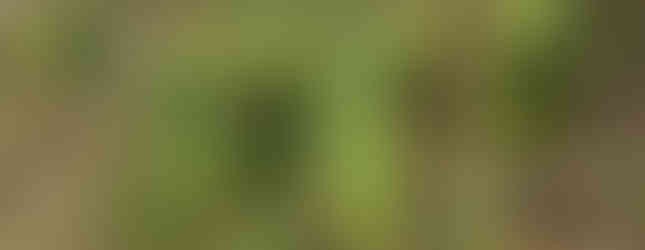Triumfetta rhomboidea(Malvaceae) Bur Bush
- Das K

- Nov 11
- 3 min read
Triumfetta rhomboidea (Bur Bush)
1. Scientific name and Basic Taxonomic classification
Species: Triumfetta rhomboidea
Family: Malvaceae
Genus: Triumfetta
Related Herbs from the same family:(Refer to the list under Malvastrum coromandelianum, as the family is the same. Key related herbs include Sida cordifolia and Hibiscus rosa-sinensis.)
2. Common names
Scientific Name: Triumfetta rhomboidea | English: Bur Bush, Chinese Bur | Sanskrit: - | Hindi: Gungi, Chikti | Tamil: Siru-urinci | Telugu: Gungu | Kannada: - | Malayalam: - | Marathi: - | Bengali: - | Tamil: Siru-urinci | (Note: Common names are highly regional and not well-standardized.)
3. Medicinal Uses:Demulcent, Diuretic, Anti-inflammatory, Astringent, Anthelmintic (expels worms), Emollient (softens skin), Febrifuge (reduces fever).
Medicinal Parts:The leaves, roots, and bark are used in traditional medicine.
4. Phytochemicals specific to the plant and their action.
Mucilage: Found in the leaves and stems. Its primary action is Demulcent and Emollient, soothing irritated skin and mucous membranes.
Tannins: Astringent compounds. Their actions are Astringent, Antimicrobial, and Wound Healing.
Flavonoids: Plant-based antioxidants. Their actions are Anti-inflammatory and Antioxidant.
Saponins: Soapy compounds that can have Anti-inflammatory and Diuretic effects.
Phenolic Compounds: Contribute to the overall Antioxidant capacity of the plant.
5. Traditional and Ethnobotanical uses covering the Medicinal uses.
Vrana (Wounds) & Twak Vikara (Skin Eruptions)
Formulation: Leaf paste or poultice.
Preparation & Use: The leaves are crushed and applied directly to wounds, boils, and skin ulcers to promote healing and reduce infection.
Reasoning: The mucilage soothes the area, while the tannins and antimicrobial compounds help tighten tissues and prevent infection.
Jwara (Fever) & Daha (Burning Sensation)
Formulation: Root or leaf decoction.
Preparation & Use: A decoction of the roots or leaves is consumed to reduce fever and alleviate internal burning sensations.
Reasoning: The plant is considered to have cooling properties, which help pacify Pitta dosha, the primary cause of fever and burning.
Mutrakrichra (Dysuria) & Ashmari (Stones)
Formulation: Leaf juice or decoction.
Preparation & Use: The juice from the leaves or a decoction of the plant is taken as a diuretic to ease urination and help flush out small urinary stones.
Reasoning: Its diuretic property increases urine flow, while its demulcent nature soothes the irritated lining of the urinary tract.
Krimi (Worms) & Atisara (Diarrhea)
Formulation: Root decoction.
Preparation & Use: A decoction of the roots is taken to expel intestinal worms and, in some cases, to treat diarrhea due to its astringent property.
Reasoning: The plant possesses anthelmintic properties, and the tannins can help firm up loose stools.
6. Healing recipes, Teas, Decoctions and Culinary use (if any):
This herb is used primarily in traditional medicine.
Skin Soothing Poultice
Purpose: To treat boils, wounds, and inflamed skin.
Preparation & Use:
Clean a handful of fresh Triumfetta leaves.
Grind them into a fine paste.
Apply directly to the affected area and secure with a clean cloth. Change twice a day.
Diuretic Decoction
Purpose: To support urinary tract health.
Preparation & Use:
Take a handful of the whole plant (leaves, stems, roots).
Boil in two cups of water until it reduces to one cup.
Strain and drink once a day.
Fever-Reducing Tea
Purpose: To alleviate fevers, especially with a burning sensation.
Preparation & Use:
Take a few fresh leaves.
Steep in a cup of hot water for 10 minutes.
Strain and drink once it has cooled to a warm temperature.
7. Disclaimer:Triumfetta rhomboidea is a plant with a history of traditional use, but its scientific validation is limited. It is generally considered safe for topical use. Internal use should be approached with caution and under the guidance of a knowledgeable practitioner, as the dosage and effects are not well-documented in modern literature. Proper plant identification is essential.
---- End of the blog -x-x
8. Reference Books, Books for In-depth Study:
Indian Medicinal Plants by K.R. Kirtikar and B.D. Basu
Ethnobotanical Leaflets
Indian Materia Medica by Dr. K.M. Nadkarni
9. Further study: Plants that might interest you due to similar medicinal properties
1. Malvastrum coromandelianum (False Mallow)* Species: Malvastrum coromandelianum | Family: Malvaceae | Genus: Malvastorm* Similarities: As members of the Malvaceae family, both plants are mucilaginous and share demulcent, wound-healing, and anti-inflammatory properties. They are used in very similar ways in ethnobotanical practice for skin issues and fevers.
2. Sida cordifolia (Bala)* Species: Sida cordifolia | Family: Malvaceae | Genus: Sida* Similarities: Sharing the same family, they both possess soothing (demulcent) properties. While Bala is more of a tonic, Triumfetta shares its application for skin conditions and as a topical anti-inflammatory agent.
-x-x-x-End-x-x-x-











Comments